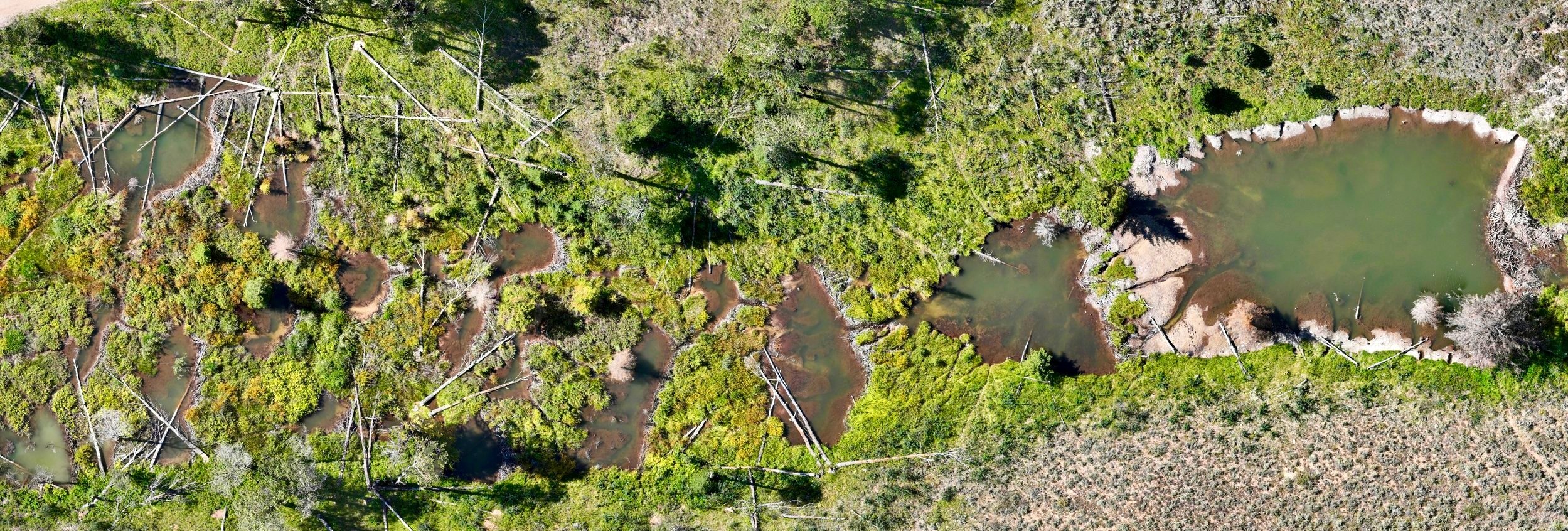
Beaver Relocation and Coexistence Projects
Beaver Restoration
WWS works with local agencies and private landowners to live trap beavers that are causing property damage. WWS then relocates them to areas where they can build dams and ponds without disturbing people. Beaver ponds are important wildlife habitat to waterfowl, fish, amphibians, and many other species. Beaver ponds also recharge the water table and create wildfire breaks. WWS also advises property owners on how they can coexist with beavers including protecting trees from being cut down and reducing flooding from beaver ponds.
Why Beavers?
There were likely hundreds of millions of beavers throughout North America before Europeans arrived. Their dams and resulting ponds were far more expansive than they are today and helped shape the landscape around us. Many species evolved to live in these wetland and riparian habitats, but the fur trade removed beavers from much of their range and resulted in lost wetland habitat and stream degradation.
Beavers are keystone species and ecosystem engineers because they build entire wetlands and habitats. When a beaver builds a dam on a small stream, it turns it into a much larger pond or wetland that many species of wildlife rely on. Nintey percent of wildlife species in Wyoming rely on riparian habitats that beavers help to create, yet only 2% of the state’s landscape is riparian habitat. Beaver dams also hold water on the landscape, refill aquifers, moderate downstream water temperatures, create fire breaks, restore eroded stream banks, and more.
“Riparian areas are helpful with fire suppression efforts particularly in the Wildland Urban Interface. These [beaver] wetlands serve not only as a barrier to fire spread but oftentimes afford water sources for wildland fire suppression.”
-W. Watsabaugh, Chief, Jackson Hole Fire/EMS and Roosevelt Fire Division Supervisor
Beaver Coexistence
Before trapping beavers, WWS works with landowners to see beavers can continue to live in the area by utilizing coexistence strategies. While live-trapping and relocating beavers does help to create wildlife habitat elsewhere, it is not a guaranteed success. If beavers can continue to live in the habitat they have chosen, we can see some of the benefits there and help to continue to support their growing population. Trapping beavers out of an area also creates unoccupied habitat, which often draws in new beavers and results in a recurring need for trapping.
The most common complaint from landowners is that beavers cause tree damage, but some heavy-duty wire fencing around trees often fixes the problem. Flooding from beaver dams can also often be alleviated with a variety of pond leveling devices, and many culverts can be protected from damming with fencing.
Beaver Facility and Relocation
If coexistence measures are not viable, or beavers continuing to live on the property is not acceptable, WWS can help by live-trapping the beavers. WWS contracts experienced local trappers to trap the beavers, who then pass them off for holding before they are released.
Beaver Facility
During the spring of 2023, WWS built one of the only beaver-holding facilities in the country, which can house up to four family groups. Beavers rely on their family groups for survival, these groups include a male and female breeding pair in addition to one-year-old offspring and kits of the year, often numbering 6-10 individuals. Families collect food and maintain dams and lodges together. Holding beavers in our facility while the rest of their family is trapped allows us to release them at the same time, which increases their chance of success in their new habitat.
Relocation
WWS works with partners at Wyoming Game and Fish, United States Forest Service, and Bureau of Land Management, to release beavers onto public land at designated restoration areas. These areas have quality habitat but could benefit from beaver ponds and dams. WWS monitors if the beavers stick around using foot and aerial surveys, game cameras, and remote tag readers. Changes to the stream are also tracked and mapped using a drone.





